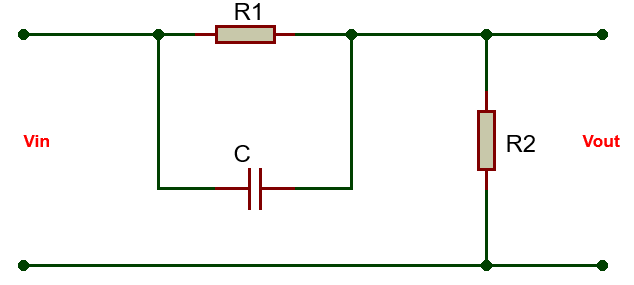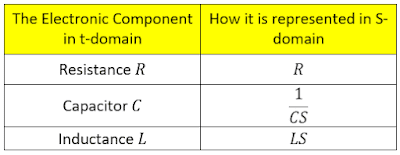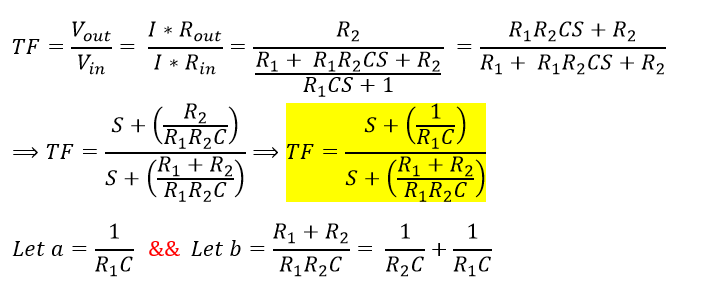LEAD Circuit is an important circuit that can be added to control systems in order to increase the system's stability.
What effect does the LEAD circuit have on the system?
When added to the system, the LEAD circuit provides a convenient way to move a certain pole to the left. Therefore; increasing the system's stability. I have talked in a previous summary about the effects of pole locations on the stability of the system. You can read that summary here.
Drawbacks of adding a LEAD circuit to the system
Even though moving poles to the left makes the system more stable, it makes the system slower and decreases the accuracy.
Where do we add the LEAD circuit?
LEAD Circuit is always added in the low power section just before the system. This is because if the LEAD Circuit was added in the high power section, high power resistances and capacitors will be needed when designing the LEAD circuit.
Diagram of LEAD circuit
Deducing the Transfer Function (TF) of LEAD circuit (4 steps)
- Change the LEAD Circuit from t-domain to Laplace domain (S-domain) according to the following:
Therefore; the LEAD circuit becomes: - Find the Input Resistance
Example
Design a suitable circuit to remove the old pole (S+2) in the following control system by replacing it with a new pole (S+4). Sketch the circuit indicating whether it is LEAD OR LAG, and derive its Transfer Function TF. Finally, find the values of R1, R2, and C?
It is clear from the designed circuit that b = 4 > a = 2. Therefore; the designed circuit is a LEAD Circuit. Also notice how the pole (-2) was replaced by the pole (-4)
Finding the values of R1, R2, and C
Note: If the resulting values of R2 and C are illogic or don't exist on the market, we assume another value for R1 and repeat calculations. Therefore; it is highly recommended that you do all the calculations in an EXCEL spreadsheet.
*****This Summary is available as PDF File
Click here to get a PDF Copy*****

![[Summary] How LEAD Circuit is Used in Control Systems [Summary] How LEAD Circuit is Used in Control Systems](https://blogger.googleusercontent.com/img/b/R29vZ2xl/AVvXsEh_7fMhrZXHswIT5bxp_22_GdzMjgdnhnH7mvyDKDvqp9e8L3fbYCnLiEIzOgWqpWRNjFJZQ3PHTMQ5lAwyZV6y5KB8mPduVlDvQ35WWVXAzTSMjgT6ztSelhvyrr8wy1n8fKSF4Gn8U-nojqVMUIg2yCKR9UuEdtclh2Q4h80tKIHPeke_sqIDee3H/s1600-rw-e90/%5BSummary%5D%20How%20LEAD%20Circuit%20is%20Used%20in%20Control%20Systems.png)



%20-%20Automatic%20Control%20Systems.png)





